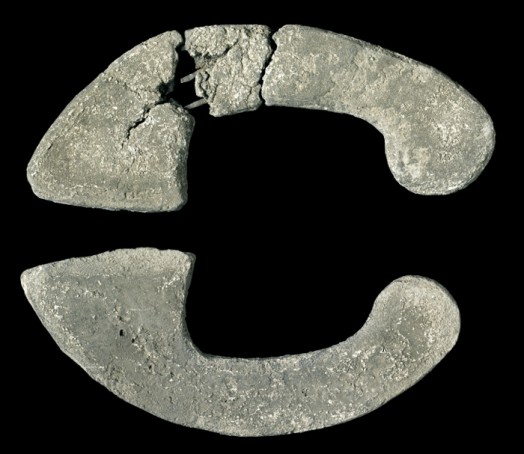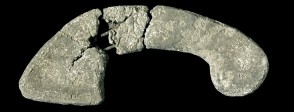
Competition in ancient Greece
The ancient Greeks lived in individual city-states, located not just on the Greek mainland, but all around the Mediterranean Sea. These city-states were in an almost perpetual state of warfare, usually in disputes over trade or land. Alongside this conflict between states, competitive social practices existed within the Greek city: Greek philosophy often took the form of arguments between opposing ideas, theatre in Athens took place only as competitions between plays and their rich sponsors, politics was the battlefield of the interests of the aristocracy and the common people. In this context, athletics can be seen as another example of what was a cultural norm of competitiveness.
Athletic competitions
We know that in very early times the funerals of important Greek aristocrats might be marked by sports events in which other nobles competed for prizes. By 776 BC, the traditional date of the first, Olympic Games, athletics had become substantial elements in some festivals in honour of the gods. Four major festivals had particular status as Panhellenic or all-Greek games, meaning that they were open to any competitor who satisfied the qualifying criteria as long as he was Greek. The greatest of the Panhellenic games were the Olympics at Olympia in southern Greece, held in honour of Zeus.
Competitors at the Panhellenic games received crowns of leaves as prizes, but could rely on receiving plenty of more substantial rewards from their home cities in the form of commemorative statues, free dinners for life and sometimes money. There were also many other athletics competitions across the Greek world which formed a professional circuit separate from the Panhellenic games. These other games delivered large financial rewards.
Athletics and the body beautiful
Several athletic events may have begun as training for warfare, the most obvious being javelin, jumping, running, running in armour and the combat sports of boxing, wrestling and pankration, a sort of all-in fighting. However, improving the body by athletic training also became an objective in itself. There was an ancient Greek belief in the relationship between the beautiful appearance of the body and the goodness of the person. This was known as kalokagathia – beauty-and-goodness – and athletics contributed to its achievement. It is possible that something of this lies behind the idea of athletics as a means of worship: the expenditure of strength, speed, skill and physical beauty on the part of the athletes can be seen as a form of sacrifice to the god.
Humans and horses
The weights shown here were used in the long jump. It is still not agreed what their purpose was. Some argue that swinging the weights lent momentum and distance to what was a standing jump; others think that the weights may have been some sort of handicap to make the jump more difficult. Long jump, along with discus and javelin, only featured as elements in the pentathlon, in which the other two sports were a sprint and boxing. These last two also featured as events in their own right. In all the athletic competitions it was the male body – no females competed except at a few special festivals – revealed in its nakedness that was the source of victory or the cause of defeat.
However, horse-racing and chariot-racing were by far the most popular events with spectators and the most prestigious. Only the richest Greeks could afford to keep and train horses and it was the owners not the riders or charioteers who were regarded as the winners. This meant that it was possible for a woman to win, as happened in the case of Kyniska of Sparta at the Olympic Games in, probably, 396 BC. Winners in the games might commission a poet to write a victory ode in their honour. We have 45 victory odes by the poet Pindar; most of the ones written for a victory in a chariot race were commissioned by horse-owners not from cities in mainland Greece, but from the hugely wealthy Greek cities in Sicily.
More information
Ancient Olympics – modern Olympics
An online tour about the Olympic Games from the British Museum.
http://www.britishmuseum.org/explore/themes/sport/ancient_olympics.aspx
Winning at the ancient games
A series of short videos about objects in the British Museum collection.
http://www.britishmuseum.org/channel/object_stories/winning_at_the_ancient_games/discus_thrower.aspx
Ancient Greek Olympics gallery
BBC History: a general introduction to Greek athletics from a British Museum curator.
http://www.bbc.co.uk/history/ancient/greeks/greek_olympics_gallery.shtml
The Olympic Games in Ancient Greece
Factsheet on ancient Greek athletics from the British Museum.
https://www.britishmuseum.org/PDF/british_museum_olympic_games.pdf
The story of the Olympic games
Overview of the Olympic Games with basic information about most aspects.
http://www.penn.museum/sites/olympics/olympiccommercialism.shtml
The context of the games
An introduction to the values embedded in the ancient games with further links to information about politics and discussion of the status of ancient athletes as amateur or professional.
http://www.perseus.tufts.edu/Olympics/spirit.html
A list of all the sports in the modern Olympics
http://www.olympic.org/sports
First modern Olympics
Photos and other information about the first modern Olympic Games in 1896.
http://www.olympic.org/athens-1896-summer-olympics
The Ancient Olympics: athletes, games and heroes
Video lecture on the ancient Olympics in two parts: an introduction to most aspects of the games illustrated by pot paintings and sculptures.
https://www.youtube.com/watch?v=xPTCS7SVg9k
More information
-
Ancient Olympics – modern Olympics
An online tour about the Olympic Games from the British Museum.
Source: britishmuseum.org
-
Winning at the ancient games
A series of short videos about objects in the British Museum collection.
Source: britishmuseum.org
-
Ancient Greek Olympics gallery
BBC History: a general introduction to Greek athletics from a British Museum curator.
Source: bbc.co.uk
-
The Olympic Games in Ancient Greece
Factsheet on ancient Greek athletics from the British Museum.
Source: britishmuseum.org
-
The story of the Olympic games
Overview of the Olympic Games with basic information about most aspects.
Source: penn.museum
-
The context of the games
An introduction to the values embedded in the ancient games with further links to information about politics and discussion of the status of ancient athletes as amateur or professional.
Source: perseus.tufts.edu
-
A list of all the sports in the modern Olympics
Source: olympic.org
-
First modern Olympics
Photos and other information about the first modern Olympic Games in 1896.
Source: olympic.org
-
The Ancient Olympics: athletes, games and heroes
Video lecture on the ancient Olympics in two parts: an introduction to most aspects of the games illustrated by pot paintings and sculptures.
Source: Penn Museum


